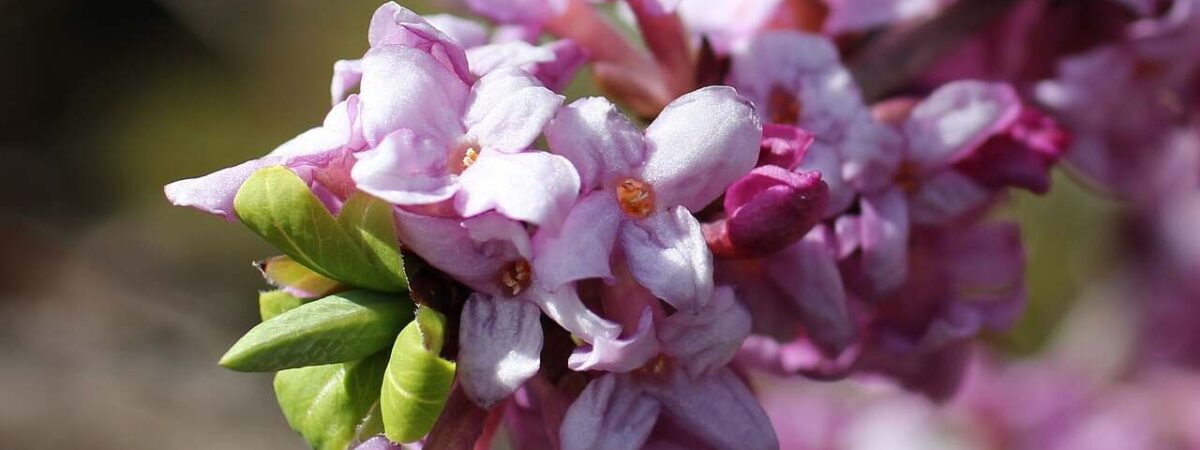When it comes to the most fragrant plants, what do you consider to plant in your garden? There are several worthy candidates present for winter Garden including jasmine, gardenia, lilac, and bearded iris.
These plants, along with many other fragrant plants exude a wonderful garden fragrance along with increasing beauty. Yet there is another shrub that undoubtedly belongs to this list which is winter daphne.
So let’s dive into the blog below to find out the growing and caring guide of winter daphne.
Plant overview
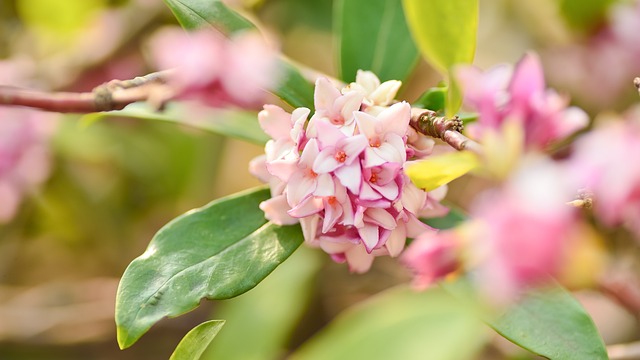
Named for the late-winter bloom time, winter daphne, scientifically termed the Daphne odora is a beautiful, fragrant, and broadleaf evergreen shrub that belongs to the Thymelaeaceae family of flowering plants.
Winter Daphne is native to Japan, Vietnam, Taiwan, and some other parts of southern China.
On average, winter daphne plants tend to grow to be up to four feet tall and attain width with a mounding growth habit. This flowering shrub bears dark green leaves and reddish-purple shaded buds which further develop into showy, fragrant flowers.
These Winter daphne flowers grow in groups or clusters along with flower shades ranging from pale pink to lilac to white. Daphne odora or ‘Aureomarginata’ is a popular variety of variegated winter daphne, that has variegated leaves featuring a mix of green with bright yellow margins.
Every part of the winter daphne plant is toxic to humans as well as pets. So be aware while growing this plant in your garden. If you are choosing to grow winter daphne in a flower bed or rock garden, take utmost care to keep this shrub away from pets and children.
How to plant winter daphne?
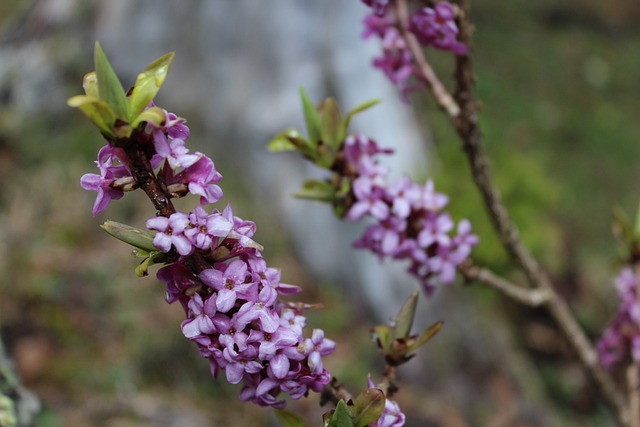
Growing winter daphne can be challenging for some gardeners, but you can give yourself an easy edge by beginning with a strong, healthy plant from your local garden center. Below is the process to give yourself and your plant the best chance of success when growing this shrub.
Growing From Cuttings
While growing a winter Daphne, growing from cuttings is preferred to growing from seed, although both are tricky and a little bit hard to grow.
Although it is possible to start growing a Daphne odora from seed, it may take several years to get a big and strong enough shrub to put in the garden and even more time to bear flowers. So you can easily start with the cutting.
If growing a plant from cutting, always start with around a 6-inch long branch from an existing, healthy shrub. Dip the cutting into a rooting hormone to increase the chances of rooting and then plant the cutting in a pot with rich soil and compost.
Keep your cutting lightly watered for the next few months. You can also simply tug on the cutting after certain weeks to see if the roots are established or not. When your plant is established, you can try transplanting it to a permanent location in a shady area.
Growing From Starter Plants
Although growing from a cutting has a greater chance of success, growing a winter daphne by using a starter plant is the best way to plant it in your yard.
Since this winter daphne tends to be the more sensitive plant to get established, you should go the extra mile to find a good plant source to buy this plant from.
It is always good to start with your local garden store or a native plant source that can better advise you about the different cultivars best for your region.
Then choose a location carefully to plant and dig a hole about twice the size of the width of the root ball and as deep as the pot in which it’s currently growing.
How to care for winter Daphne shrubs?
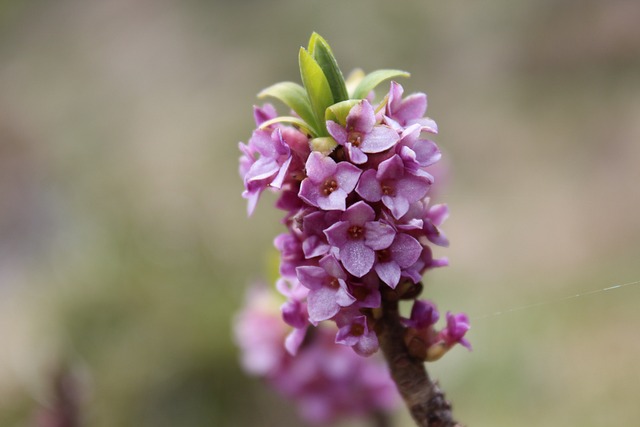
Winter daphne is one of the difficult plants to grow. They don’t transplant well, and they may require maintaining a delicate balance between keeping the soil moist and keeping it well-drained.
The winter daphne is well known for dying suddenly and without an obvious cause. To avoid disappointment, you should always consider these plants as temporary and place them in a place that allows for easy removal of them if your plant does die.
Light
While some of the varieties of winter daphne do well in full sun, most of the varieties will bloom best in partial shade conditions. These varieties are grown specifically for their variegated leaves that will display well even in relatively part shady conditions, although it may reduce the flowering. Group these plants with any other acid-loving plants that have similar sunlight needs like azaleas.
Soil
Winter daphnes thrive well in well-drained soil rich in plenty of compost and a slightly acidic soil pH. These shrubs thrive well in moist soil.
To keep the soil of daphne moist in summer and to keep them cool, it is recommended to apply a three-inches layer of mulch. These water daphnes absolutely can’t withstand water. So make sure the soil drains well.
Water
Water your shrub at least once a week, or whenever the top inch of soil feels dry in the first year of growth. Once your plant has been established, water daphne shrubs may require a tricky balance between keeping the soil moist and good drainage. It is recommended to make sure that the mulch remains moist, and that your shrub gets at least 1 inch of water per week through any medium like rainfall, irrigation, or a combination.
Temperature and Humidity
Winter daphne shrubs can be grown in USDA hardiness zones up to 4 to 9 depending on the variety, but in USDA zones 4 and 5, these plants really should be considered semi-evergreen, or even deciduous plants, since these plants tend to drop their leaves and show new foliage in the early spring.
Generally, these shrubs accept high humidity levels, although they are very much susceptible to fungal leaf spots.
Fertilizer
Being a delicate plant, winter daphne shrubs require regular fertilizer and they should be fertilized at least twice a year using a granular balanced fertilizer like 10-10-10. February or March and July are the best times to fertilize the plant.
How to propagate winter daphne?
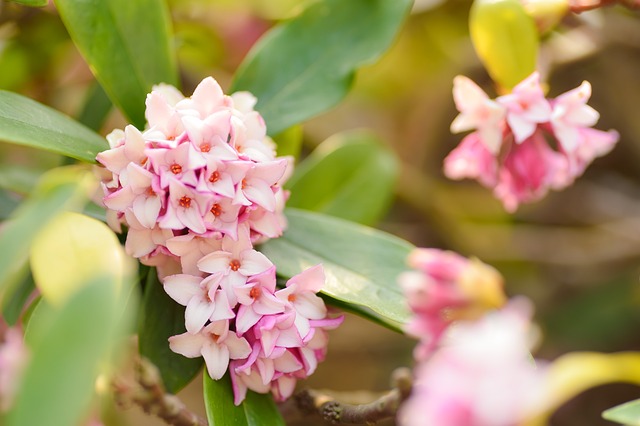
You can grow your winter daphne plant from seeds. However, most of the daphne varieties rarely produce seeds. If you do so, germination may be notoriously unreliable and some report says that it can take up to two years.
In contrast, it’s very easy to propagate your plants from cuttings or by layering stems.
So be warned, these rooted cuttings can be slow to grow and it may take at least up to two years to bear flowers, so most gardeners opt to buy the transplants from a nursery and transplant them.
This are how you can propagate your plant from Cuttings
- Take a healthy-looking, undamaged, and firm cutting from the current year’s growth that had not flowered in early to mid-summer. Use sharp, sterile secateurs or snip to take a six-inch cutting.
- Cut just below a leaf node into the woodier part of the stem. Remove the other leaves from the lower half of the stem and any soft tips at the top until two to four leaves remain.
- It is suggested to take some rooting hormone powder, and a few handfuls of a potting mix that is rich in organic matter like compost, peat, or coir and plant your plant in that soil.
- If you are propagating your plant in spring, look for a young, and healthy stem which is supple enough to bend and lay along with the ground with little to no resistance.
- The stem may take up to at least 12 months to produce enough roots to support it. Once the stem will start showing strong foliage growth, you can cut it off from the side of the mother plant.
- After the plants are established, you can transplant them to a new and better spot.
Conclusion
As your read this article this far, you might get an idea about how to grow these winter daphne plants.
So bring this shrub to your garden and add some fragrance and beauty to your garden.
You may also like to read
How to grow and care for Dahlia flower plant- A step-by-step guide
How to grow Chinese Fringe Flowers in your Garden?- Everything you need to know Loropetalum

